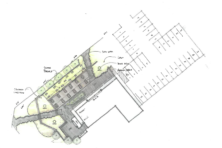In Wake of Kayaking Deaths, Expert Outlines Kayak Safety Tips
- Share
- Tweet
- Pin
- Share
With the unfortunate and unnecessary deaths of two men while kayaking off Cave Point on April 28, it seemed appropriate to talk with professional paddler Tim Pflieger of Door County Adventure Center about kayaking safety in the challenging waters of Lake Michigan.
“A tragedy like this brings to the forefront the personal choice you have to make when out on the water,” Pflieger said. “Are the conditions right for me to paddle in and paddle out? Do I have the right craft and do I have all the right safety gear with me, including a flotation device so if the worst occurs, I have the chance to walk out or paddle out of the situation?”
Conditions were against Mathew Alan Tauferner, 29, of Sturgeon Bay, and Dylan Tyler Dohr, 21, of Clintonville, when their kayaks capsized in the 43-degree water off Cave Point late in the morning of April 28. The Door County Sheriff’s Dept. said neither man was wearing a personal flotation device. Dohr was home on leave from the Marines.
“This water’s cold all the time, particularly in that portion of the lake,” Pflieger said, adding that the waters near Cave Point can be particularly treacherous. “It’s very challenging water with the rock faces that are there. The energy of the waves hits the rocks. It’s called clapotis. That energy has to go somewhere, so it goes out into the water. You get wind action and wave action going in one direction, and then you get the energy bouncing off the rock going that can go in another direction. That can be very unstable water off Cave Point. It amazes me that people are paddling on these waters without flotation devices.”
With the given water conditions and temperature, kayaks without spray decks and no flotation devices, Pflieger said the two men didn’t have a chance.
“There are really three pieces I look at,” he said. “The first is what are the weather conditions, not only what are they when I’m paddling but what will they be in a couple of hours? That’s wind and wave and water temperature. Water temperature this time of year is cold, and it is most of the time. I’ve been out there in August when the water temperature was 41 degrees.
“The second piece is paddling craft that you’re familiar with and matches the water you’re paddling. If you’re paddling a traditional kayak that requires a spray deck, then you should have a spray deck on it so the water doesn’t come into your cockpit and cause instability and possible capsizing.
“The third thing is to have safety gear,” Pflieger continued. “A personal flotation device, it’s a requirement for me. I’m a professional paddler and I wear them all the time. The law requires that you have it on your craft. My guests are required to wear PFDs all the time. It’s not an option. That’s our standard protocol.”
Pflieger also recommends writing out a float plan and leaving it with someone who can call 911 if there is a problem. Include how many people are in the party, color of vessels and color of PFDs. He also suggests putting a copy of the float plan in the windshield of your vehicle.
“When you’re going against time, that just helps the rescuers who are putting themselves in the same conditions to make the rescue,” he said.
Here are some tips from the U.S. Coast Guard Auxiliary on what to do in an emergency.
- If you can’t get to shore or back in your kayak, do not swim because you will lose body heat even faster. Floating in your PFD is your best bet.
- In 70-degree water, you can survive for about 18 hours while floating with a PFD, or for about 13 hours treading water.
- In 55-degree water, the survival window is 3.5 hours floating in a PFD, three hours treading water, and two hours swimming.
- In 35-degree water, the survival window is less than two hours floating in a PFD, one hour and 25 minutes treading water, and about 45 minutes swimming.
- If you are wearing a PFD, bring your knees to your chest to try to contain body heat. If you are with others, huddle together to save heat. If you are wearing a Type 3 life vest, do not draw up your knees. Instead, keep your legs together and arms at your side while leaning back to keep your face out of the water.
- Keep your head above water.


